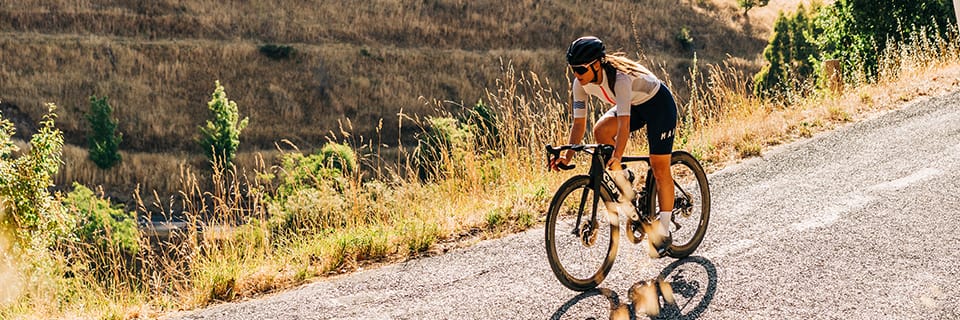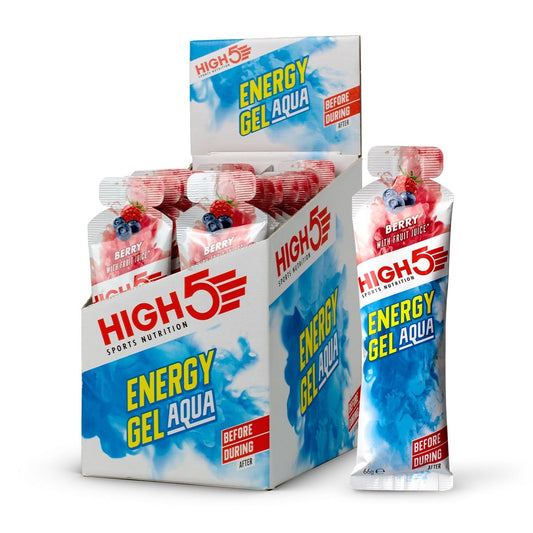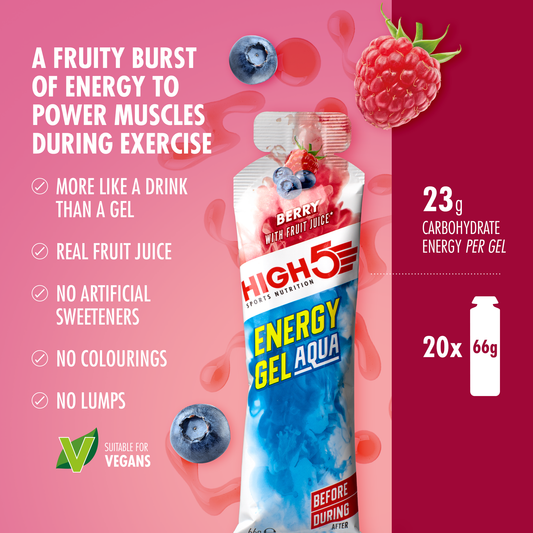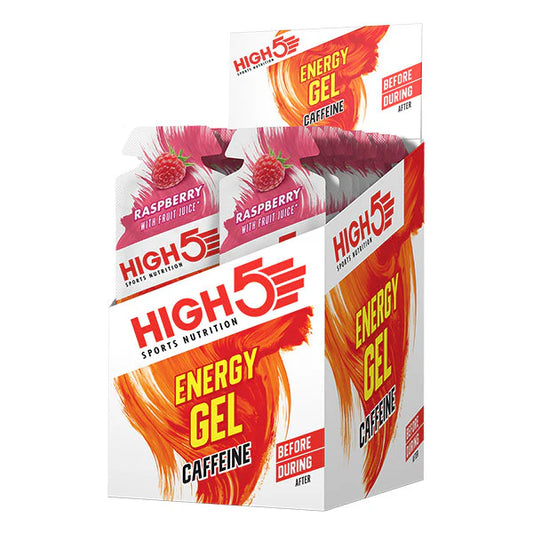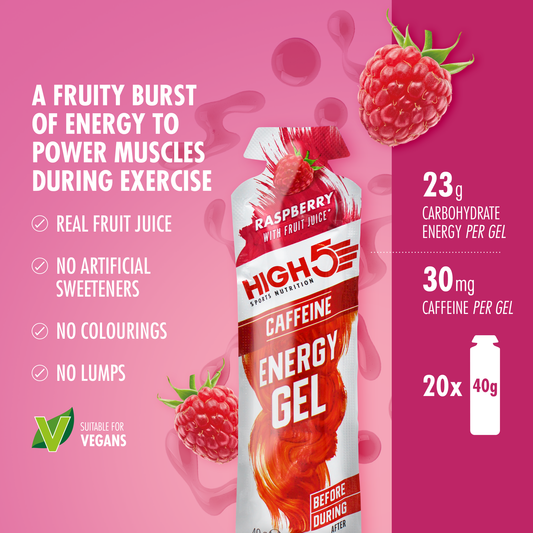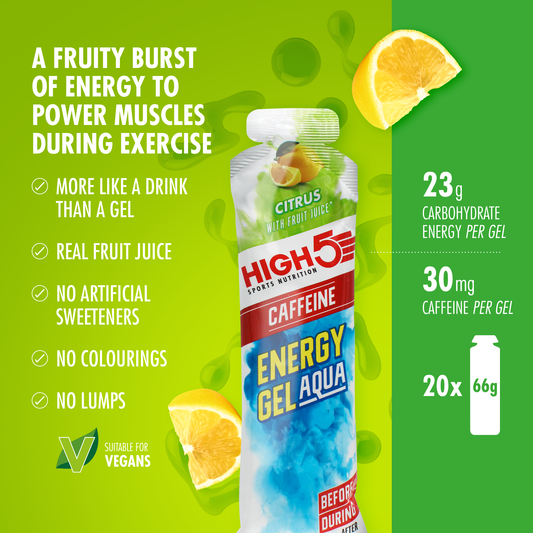Easy to carry and to consume in the middle of an effort, energy gel is ideally suited to high-intensity cycling and mountain biking. Invaluable in critical moments, they provide the quick energy boost you need. There's a wide choice of energy gels, enabling every cyclist to adapt and optimize their nutritional strategy, whether training or racing, according to their needs and preferences. Composition, texture, taste...
We detail the important criteria to help you to choose the right energy gel.
ENERGY GELS FOR CYCLISTS
For efforts lasting several hours, cyclists need to provide appropriate refreshments if they hope to maintain a good level of performance over time. The use of an energy gel is part of a personal cycling strategy. sports nutrition.
A fast source of energy for cyclists
Good cycling nutrition, mainly carbohydrates, helps preserve muscle glycogen stores, the cyclist's fuel. For long training sessions and races (over 3 hours), the standard carbohydrate requirement is estimated at 60 grams per hour. Road and mountain bikers find this intake in energy drinks, gels and foods.
Gels alone cannot meet all these carbohydrate requirements. As most are highly concentrated in fast sugars, they may cause gastric discomfort and disturb blood sugar levels. Ideally combined with a sports drink, gels supplement your carbohydrate requirements and, like energy bars, form part of your nutritional strategy.
Carbohydrate content is not the only criterion for choosing an energy gel. You need to consider its composition in detail, analyzing in particular the carbohydrate mix used, which gives an indication of the gel's purpose (fast or more progressive energy).
The benefits of cycling gels
Energy gel provides the body with a rapidly assimilated dose of sugar. Unlike energy bars, gel requires no chewing effortThis is its main advantage during a race or high-intensity outing.
Its pocket format and suppleness are highly appreciated qualities for transport. The energy gel fits easily into the back pocket of a jersey. When running, it slips discreetly under the shorts, so it's always close at hand.
Energy gels for cycling
When cycling or mountain biking, there are a number of situations in which an energy gel is particularly useful. When you're too busy, because the terrain leaves you no time to rest, or because the effort is so difficult, the cyclist/mountain biker has a reflex to use an energy gel.
We're obviously thinking of the end of a race or the last few kilometers of a long, intense training session, when the body is severely taxed and needs a quick supply of carbohydrates. We're also thinking of particularly violent efforts (difficult mountain climbs, time trials, cyclocross, cross-country, triathlons). In these circumstances, the athlete needs to optimize his or her refueling, concentrating and giving 100%. Taking the time to chew an energy bar is not the best choice.
Consumed regularly or reserved for critical moments, energy gel helps to replenish the glycogen reservoir.
THE COMPOSITION OF ENERGY GELS
Conventional gels are made up of water, carbohydrates, sodium and vitamins. This basic formula varies according to the type of gel. Depending on the desired effect (boost, endurance, anti-cramp), it can be enriched with stimulants (caffeine, acerola, guarana, ginseng), magnesium, antioxidants (zinc, vitamins A, B, C, E) and/or amino acids (BCAA).
To assess the effect of an energy gel, it's worth looking at the carbohydrate mix used. Gels generally contain carbohydrates in various forms (glucose, maltodextrin, fructose), to help the body assimilate them more quickly. You can remember that the fastest carbohydrate mix to assimilate is the glucose/fructose combination. You can also note that the maltodextrin/fructose combination offers rapid assimilation while limiting the sweet taste.
Sodium is another important component of energy gels. For bike/mountain bike rides in the heat, it may be wise to opt for a gel with significant quantities of sodium, magnesium and potassium, minerals which help compensate for water loss. For long distances, an electrolyte-rich gel is no substitute for a water bottle. energy drink or anti-cramp drink.
The different types of ENERGY GELS
Not all gels have the same composition, nor the same purpose. There are "kick-start" gels, "endurance" gels and antioxidant gels.
Whiplash" cycling energy gel
Brands use different terms for this type of whiplash energy gel: "instant energy", "intense effort", "energy booster" and so on. It's your best ally in the run-up to an extreme effort or as you approach the finish line. Thanks to its rapidly assimilated carbohydrates, this energy gel guarantees an immediate effect.
Energy gels are often combined with stimulants (coffee, acerola, guarana, ginseng...). These ingredients (boosters) reduce feelings of fatigue and stimulate concentration. Be careful, however, not to consume too much caffeine.
Long-distance cycling energy gel (Endurance)
Long-distance", "endurance" or "ultra-endurance" energy gel is a more progressive source of energy. Its carbohydrate combination includes low-glycemic index sugars (fructose, maltodextrin), which can be assimilated over a longer period.
Anti-muscle fatigue" antioxidant bicycle energy gel
Antioxidant gel is designed to support your muscular activity throughout your ride. Its magnesium contributes to healthy muscle function, while antioxidants (vitamin E and zinc) help protect cells against oxidative stress. Finally, vitamin B6 reduces fatigue.
RANGE, TASTE, TEXTURE AND PACKAGING OF ENERGY GELS
To find exactly the right energy gel for you, we take a look at all the relevant selection criteria.
Energy gel ranges: organic, gluten-free, vegan
Energy gels are being integrated into ever wider ranges, to suit the diets of as many cyclists as possible. At Probikeshop, you'll find a choice of gluten-free gels, an organic range and a vegan range. selection of vegan gels. The absence of lactose or other food allergens, colorants or preservatives is always specified by the brands.
Choice of flavors: the alternative to salted gels
Brands offer a wide range of sweet flavors to satisfy cyclists' taste buds. But there are solutions for cyclists who can't stand too much sweetness on the bike. To discover something different, or to break the sweet habit, you can try neutral-tasting or salty-tasting energy gels. Some salted gels use natural recipes based on organic fruit or honey, which make the difference with most classic, very sweet gels.
Texture and appearance of energy gels
Gels in liquid form, which facilitate ingestion and digestion, are recommended for sustained outings. More substantial gels are better suited to moderate outings. To break up the monotony of gels and vary the textures in the mouth, there are also fruit pastes, purees or "gummies". energy sweets.
What packaging should I use for my cycling energy gel?
The classic packaging for energy gel is the easily detachable sachet. Many brands also use or tubes with resealable caps. All formats fit into a standard jersey pocket - sizes range from 20 to 90 g. Note that some energy gels are available as eco-refills, an ideal solution for reducing packaging and avoiding litter on the road.
HOW TO USE YOUR ENERGY GEL?
Highly concentrated in sugars, energy gel should be consumed with care, to avoid the risk of gastric discomfort on the bike. You should always drink water (not an energy drink) immediately after taking the gel, to dilute the active ingredients and balance the liquid intake with the carbohydrate/sodium intake. This balance refers to the principle of the isotonic drink.
The golden rules for using energy gels :
- Always take one or two sips of clear water after consuming your gel;
- Do not consume your gel and your energy drink at the same time;
- Test and validate a gel in training before using it in competition.
We recommend starting to use energy gels in the second half of training or on the most demanding parts of the course. This is because energy gel is highly loaded with fast carbohydrates. Once you've started taking them, you need to maintain a high glycemic level during your effort.
While it's advisable to take a gel every 45 minutes, each cyclist must find the best pattern according to his or her sensitivity and riding style. It's up to each cyclist to opt for the best strategy in terms of sports nutrition, by combining the intake of gels with the consumption of drinks and food. energy bars.
Découvrez tous nos conseils & Tutoriels
ACCESSORIES - Gels & Gums
-

Set of 5 226ERS ISOTONIC Energy Gels (68G) Mint Shelf-life Exceeded
Regular price 9,99 €Regular priceUnit price per -

SIS GO ISOTONIC ENERGY Gel (60ml) Apple Short shelf life
Regular price 18,99 €Regular priceUnit price per -
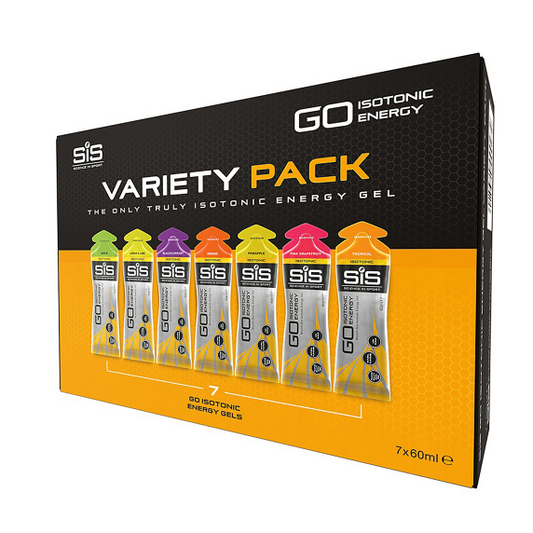
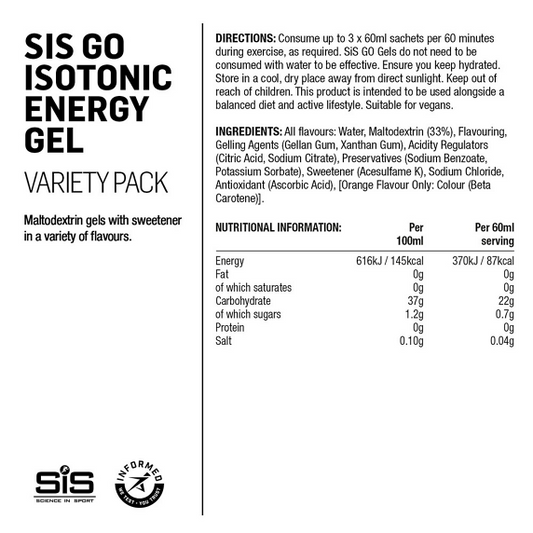
Pack of 7 SIS GEL GO ISOTONIC Energy Gels Gluten-free (60 ml)
Regular price 10,99 €Regular priceUnit price per -
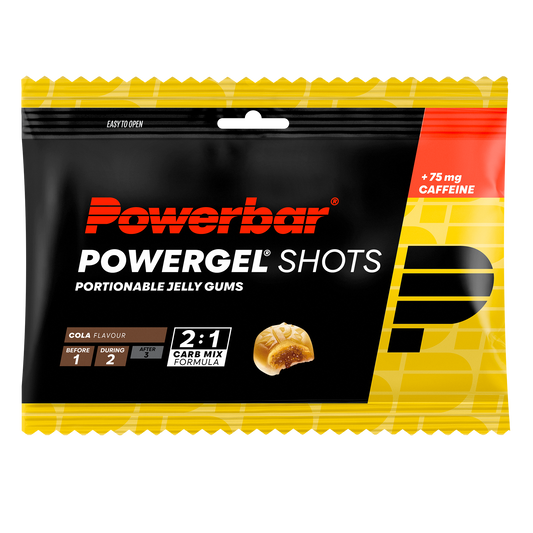
Bonbons POWERBAR POWERGEL Shots (60gr) Cola
Regular price 1,99 €Regular priceUnit price per -
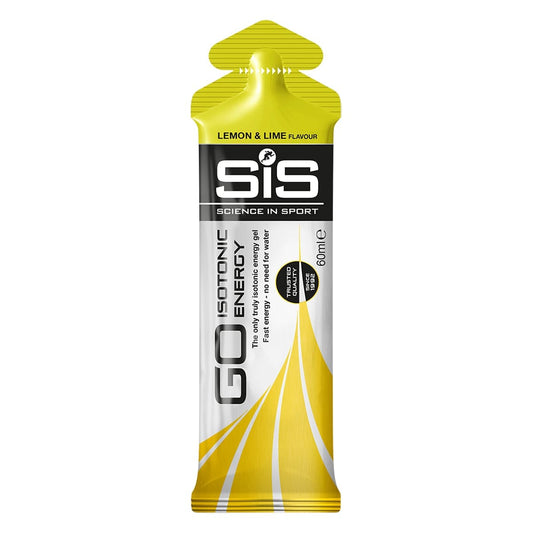
SIS GO ISOTONIC ENERGY Gel (60ml) Lemon Lime
Regular price 1,99 €Regular priceUnit price per
